14 Aug 2020 | Belarus, Opinion, Ruth's blog
[vc_row][vc_column][vc_single_image image=”114568″ img_size=”full” add_caption=”yes” alignment=”center”][/vc_column][/vc_row][vc_row][vc_column][vc_column_text]My Twitter feed this week, probably like yours, has been filled with terrifying, outrageous but also at points inspirational images from Belarus. The sham of an election that saw Alexander Lukashenko ‘re-elected’ with 80% of the vote has been dismissed and disputed by election observers, the European Union and the US State Department.
Lukashenko has used every tool available to a totalitarian leader. His opponent Svetlana Tikhanovskaya has had to flee the country to protect her family. The military have been deployed against protestors, with public beatings a seemingly normal occurrence. The KGB has been raiding homes overnight arresting anyone considered a threat to the regime. Dozens of journalists have been apprehended. Over 6,700 people have been detained with reports now emerging of torture taking place in the prisons and during interrogations. This is happening on European soil in the year 2020, less than 1,400 miles from London – we cannot ignore it. We must not.
As ever the repressive tools of the dictator rarely silence the population, who seem determined to stand up against Lukashenko and his allies, in numbers not seen in Belarus since the fall of communism.
Yesterday, women wearing white and carrying flowers marched on Minsk and formed solidarity chains in numerous other areas – the protest was clear “Flowers are better than Bullets”. Impromptu strike action has followed at the state owned BelAZ truck factory, with chants that they all voted for Tikhanovskaya not Lukashenko, with other factories seemingly following suit. The protest that touched me most was the protest from the Belarusian State Philharmonic who stood in front of their building with placards stating: “My voice was stolen” as they sang together.
Each of these acts of protest have demonstrated extraordinary feats of personal courage and bravery from a population that is tired and is demanding their basic entitlement of a democratic government that respects the rule of law. Their individual and collective actions are inspirational and it is up to all of us to make sure that they know that they aren’t alone.
Index was established to provide a voice to Soviet dissidents in the 1970s, many of whom were from Belarus. Our commitment to them remains as strong today as it was in 1971. We stand with the people of Belarus against tyranny and repression and we will do all we can to make sure that the world keeps paying attention to their plight.[/vc_column_text][/vc_column][/vc_row][vc_row][vc_column][three_column_post title=”You might also like to read” category_id=”13527″][/vc_column][/vc_row]
2 Dec 2019 | Artistic Freedom Commentary and Reports, Azerbaijan, Azerbaijan Incident Reports, Belarus, Belarus Incident Reports, News and features, Russia, Turkey, Ukraine
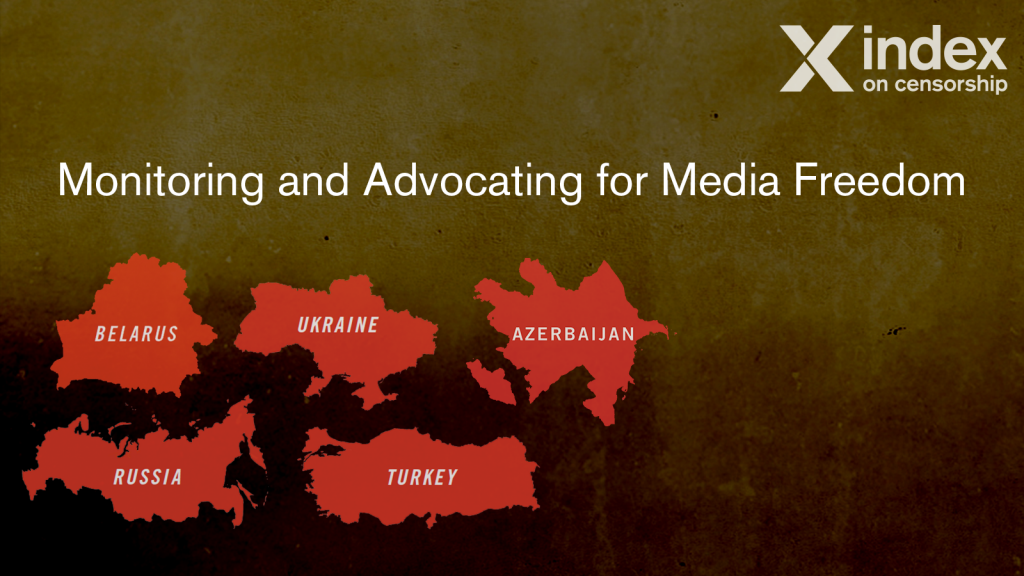
Index on Censorship’s Monitoring and Advocating for Media Freedom project monitors threats, limitations and violations related to media freedom in Azerbaijan, Belarus, Russia, Turkey and Ukraine. Previously these countries were also included in the Mapping Media Freedom project, which Index incubated and managed between 2014 – 2018.
This report summarises policy recommendations based on analysis since April, 2019. The recommendations are based on research by in-country correspondents and Index staff. Country reports published by the project since April are available on the project webpage.
After a brief background section, the report sets out key policy recommendations that apply to all the project countries, followed by key recommendations for each project country.
Background
It is essential that media freedom groups and international organisations continue to monitor, verify and document threats, limitations and violations related to media freedom in Azerbaijan, Belarus, Russia, Turkey and Ukraine, continue to raise awareness about the challenges and to advocate for change. Media freedom is severely restricted in all these countries and journalists are under great pressure.
Violence against journalists; misuse of counter-terror and security legislation to silence journalists; travel bans that isolate journalists and impact them professionally; failure to investigate violent crimes against journalists and silencing and punishing journalists through defamation and insult laws – all these are familiar tactics and increasingly common. In more recent years the introduction of restrictive internet-related legislation, such as in Russia, has opened a new frontline in the fight to safeguard media freedom.
RECOMMENDATIONS FOR ALL PROJECT COUNTRIES
- Governments and the EU must take a stronger stand for media freedom
Governments and multilateral groups, in particular the European Union (EU), must take a strong stand in defence of media freedom and journalists, both in their bilateral relations with the project countries and in multilateral processes. Governments and the EU should ensure that issues such as proposed or existing legislation that restricts media freedom, violence against journalists and failures to investigate crimes against journalists, form part of the agenda in strategic bilateral and multilateral discussions.
Countries that have a version of the Magnitsky Act (in the EU, this includes Estonia, Latvia, Lithuania and The Netherlands) should consider making use of this legislation in cases where media freedom and the safety of journalists are at stake. Countries that have not yet introduced such legislation should consider doing so. The UK should put its Magnitsky amendment into use.
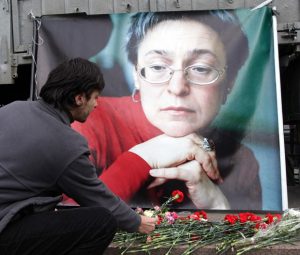
A man lays flowers near the picture of murdered journalist Anna Politkovskaya, during a rally in Moscow, Russia, 7 October 2009. CREDIT: EPA / Alamy Stock Photo
Impunity is a major challenge in all the project countries. In Azerbaijan, the death of freelance journalist Rafic Tagi, who died in hospital after a stabbing in 2011, has never been investigated properly. Belarussian cameraman Dzmitry Zavadski disappeared in 2000 on his way to meet journalist Pavel Sheremet, later killed in Ukraine in 2016. Zavadski’s body was never found.
The instigator of the 2006 contract killing of investigative journalist Anna Politkovskaya in Russia is still not known, nor is the motive. In 2018 the European Court of Human Rights found that the Russian authorities had failed to carry out an effective investigation into her killing. Turkey failed to investigate the death of editor Rohat Aktaş, killed when he was covering hostilities between Kurdish separatists and Turkish forces in 2016.
Ukrainan journalist Pavel Sheremet was killed by a car bomb in Kyiv in 2016 and, despite statements from the authorities that the case is a priority, there has been no progress. All the project countries should commit to investigating unsolved killings of journalists and should implement the guidelines in recommendation CM/Rec(2016)4 of the Committee of Ministers of the Council of Europe.
In relation to impunity, the guidelines envisage that when investigations and prosecutions have not resulted in justice member states can consider establishing special inquiries or independent specialised bodies, and that the latter could involve participation by respected media and/or civil society figures.
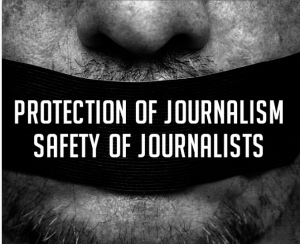 Council of Europe member states must engage fully with the platform for journalism
Council of Europe member states must engage fully with the platform for journalism
Council of Europe member states must engage more actively with the Council of Europe’s Platform for the protection of journalism and safety of journalists. The partner organisations of the platform, which include Index on Censorship, should continue to use the platform to raise awareness of media freedom violations and threats to journalists. This should include advocating for states to respond to all alerts communicated to the platform.
The overall response rate from states in 2018 was only 39%. It is also important that states provide substantive replies to alerts and engage in follow-up dialogue with the partner organisations. The platform is an underused mechanism, with potential to achieve more. Partner organisations can also be of assistance to member states that are willing to engage fully.
Belarus is not a member of the Council of Europe, but other international organisations and processes, such as the special procedures of the United Nations human rights council, should be engaged to follow up cases and issues in Belarus.

Azerbaijan must halt its use of travel bans for journalists including Khadija Ismayilova
AZERBAIJAN
- The EU must defend media freedom in negotiations with Azerbaijan
The EU must use its influence to defend media freedom and journalists in Azerbaijan. Negotiations on an agreement to replace the EU-Azerbaijan Partnership and Cooperation Agreement, in place since 1999, are at an advanced stage and will need to be brought to a conclusion by the new European Commission. It is extremely important that the EU raises media freedom and human rights in these negotiations.
In 2018, the European Parliament adopted a resolution which recommended that the EU should make deepening of relations with Azerbaijan conditional on respecting democratic values and human rights, and that it should ensure that Azerbaijan frees its political prisoners (including journalists such as Afgan Mukhtarli) before the negotiations on a new partnership agreement are concluded. Mukhtarli remains imprisoned.
Azerbaijan must refrain from targeting journalists’ online activities, including through call hacking, internet blocking and distributed denial-of-service (DDoS) attacks. In October, internet blockages and disruption to mobile phone services were reported in central Baku in connection with ongoing protests. Several journalists were also detained or subjected to physical violence during the protests. Social media platforms such as YouTube should respect Azerbaijani users’, including journalists’ right to seek, receive and impart information. Platforms should implement terms and conditions consistently and transparently, including when dealing with harassment of journalists by alleged state-sponsored trolls.
Azerbaijan must halt its use of travel bans for journalists. For example, the well known journalist Khadija Ismayilova is currently under a travel ban. OSCE Media Freedom Representative Harlem Désir has stated that it is a serious hindrance to her work as a professional journalist.
BELARUS
- Amend the law on mass media
Belarus must amend the law on mass media. The legislation currently requires journalists, including freelancers, who work for media outlets registered outside Belarus to obtain accreditation from the foreign affairs ministry. This has led to journalists being fined repeatedly. At a very minimum, Belarus must urgently establish procedures that enable journalists to appeal rejected accreditation requests.
- Other governments must signal that restrictions are not acceptable
Other governments must make it clear to Belarus that restrictive and repressive actions against journalists will not be tolerated. This applies to the requirements for accreditation for journalists working for non-Belarussian media outlets above, but also to the practice of detaining journalists for short periods. Some observers have credited Belarus’ tendency to impose fines on journalists or to detain them for short periods – rather than sentence and imprison them – as an attempt to build alliances in the West at a time when relations with Russia are weak. Other governments need to signal clearly it is not acceptable.
- Train journalists in human rights and United Nations procedures
In the case of Belarus, which is not a member of the Council of Europe, it is important that support and training aimed at enabling journalists to defend their rights includes training on other international organisations and processes, such as the special procedures of the United Nations human rights council, including the special rapporteur on the situation of human rights in Belarus.
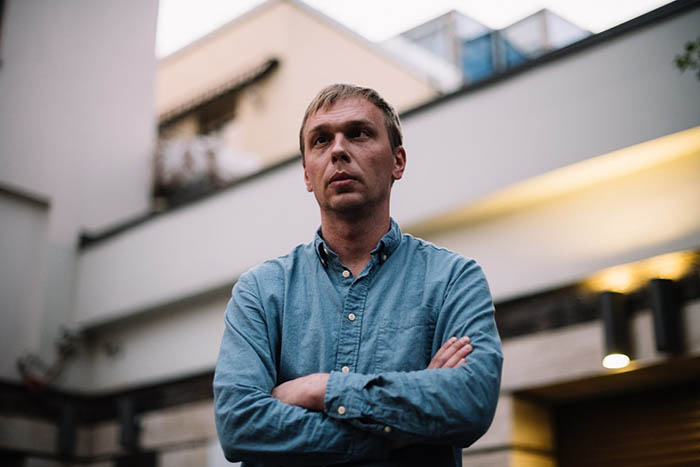
Russia must investigate cases of trumped-up charges against journalists such as Ivan Golunov
RUSSIA
- Halt the extension of foreign agent legislation to individual journalists
Russia must refrain from finalising the legislative changes that would extend the scope of “foreign agent” to individual journalists. Existing problematic legislation already requires media outlets that receive funds from abroad to register as foreign agents. At the time of writing the Duma has approved changes that would extend this to individual journalists, including freelance journalists and bloggers. Any one of these receiving payments for services, or a salary from abroad, would need to register with the ministry of justice. All published work would need to display a “foreign agent” label. This legislation should not proceed, and existing legislation that labels media outlets as foreign agents should be reviewed.
- Ensure access for journalists to court proceedings
Access to court proceedings is a frequent problem for journalists. As stated in Opinion No. 8 of the Consultative Council of European Prosecutors: “Transparency in the performance of the prosecutor’s duties is an essential component of the rule of law, and one of the important guarantees of a fair trial. Not only must justice be done, but it must also be seen to be done. In order for this to be possible, the media should be able to provide information on judicial, criminal or other proceedings” (paragraph 30). The authorities must review existing processes for compliance with international standards.
- Investigate cases of trumped-up charges against journalists
The authorities must thoroughly investigate cases of trumped-up charges against journalists and ensure that the instigators are brought to justice. Recent incidents include the high-profile case of Ivan Golunov, arrested for possession and trafficking of drugs, and what appears to be a fake letter sent in the name of Nikita Telizhenko with the aim of discrediting him.
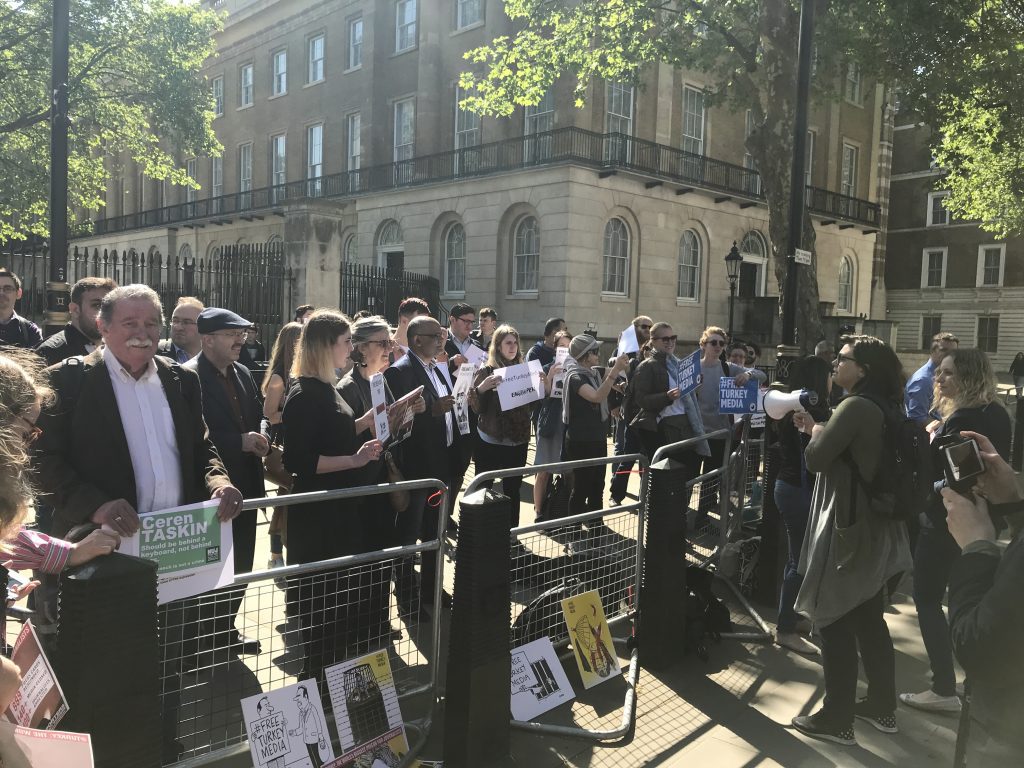
Index on Censorship magazine editor Rachael Jolley leads chants in support of Turkey’s jailed journalists ahead of Turkish President Erdogan’s visit to Downing Street in May 2018
TURKEY
- Other governments should not support Turkey’s judicial reform strategy, at least not in its current form
The judicial reform strategy (JRS), launched in May, 2019, will not achieve any meaningful change, at least not in its current form. Turkey’s judicial system is not independent: it is overloaded with cases, many which concern journalists, and it has been undermined through the large-scale dismissal of judges. It is extremely important that other countries and international organisations scrutinise the judicial reform strategy, and make it clear that in its current form it is completely inadequate when it comes to addressing the enormous structural problems of the judiciary.
- Implement the recommendations of the United Nations special rapporteur
In May 2019, the United Nations special rapporteur on the promotion and protection of the right to freedom of opinion and expression published a follow-up report to an earlier visit to Turkey in 2016. The rapporteur had made a series of recommendations in 2016, which included releasing jailed journalists and reversing the closure of media outlets. The follow-up report found that Turkey had either failed to implement or had contravened all the recommendations, with the exception of one (lifting the state of emergency). Turkey should urgently implement all the recommendations made by the United Nations special rapporteur.
- Support trial observation
Diplomatic representations and international organisations, including the EU, need to support observation of trials that involve journalists and media outlets. High-profile trials in central locations can be well-attended by observers, but coverage of trials in remote locations is more limited. Support can include sending representatives to follow trials and/or financial support for organisations that monitor trials.
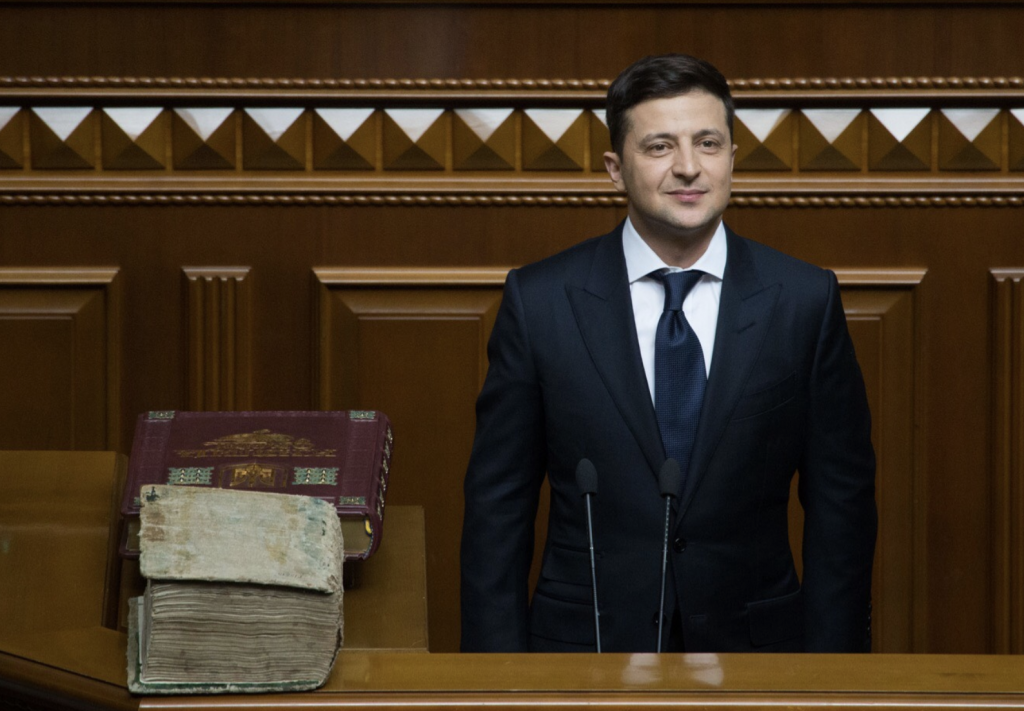
Ukraine President Volodymyr Zelenskiy must engage with the media. Photo: Wikimedia
UKRAINE
- The government must review state support for far-right groups associated with extremism
The government needs to undertake an independent and transparent review of state support, including financial support for far-right groups associated with extremism. The review should involve international experts. It should include investigating the possibility of state security force collusion with paramilitary and extremist organisations and thorough investigations of alleged involvement in violence against journalists, such as the unsolved murder of Oles Buzina.
- Elected representatives must engage with the media
President Volodymyr Zelenskiy reportedly held a 14-hour press conference in October, attended by 300 journalists. Whether it signals a new era in the relationship between Ukraine’s elected representatives and the media remains to be seen. The failure of the president and lawmakers to engage meaningfully with the media in the past has been a challenge for journalists and this needs to change.
- Invest in the public service broadcaster
In the highly divisive media landscape, the role of the public broadcaster is extremely important. Ukraine’s public broadcasting company is severely underfunded and currently has a very small audience. As Index on Censorship outlined in its Demonising the Media report a year ago, a significant but underreported trend in the region is the threat to public broadcasters. A number of national broadcasters in the EU and neighbouring countries were brought under closer government control in 2014-18. Ensuring both sufficient funding and editorial independence are crucial in ensuring the public’s right to know is defended.
28 Nov 2019 | Belarus, Belarus Incident Reports
[vc_row][vc_column][vc_column_text]
Index on Censorship’s Monitoring and Advocating for Media Freedom project tracks press freedom violations in five countries: Azerbaijan, Belarus, Russia, Turkey and Ukraine. Learn more.
[/vc_column_text][/vc_column][/vc_row][vc_row][vc_column][vc_row_inner][vc_column_inner][vc_custom_heading text=”6 Incidents” use_theme_fonts=”yes”][vc_column_text]
Court upholds local council’s decision to deny a journalist accreditation
17 October 2019 – The Economic Court of the Brest Region dismissed an appeal from independent regional newspaper Hantsavitski Chas against a court decision in September, which ruled to uphold Hantsavichy Local Council’s decision to deny accreditation to Hantsavitski Chas journalists.
Hantsavitski Chas’ editor-in-chief, Piotr Huzajeuski, said that he believed that the journalists are being deprived of their right to cover events held by the local council.
In March 2019, the editorial board of the newspaper Hantsavitski Chas sent a letter to the local council asking to accredit its journalists to cover the council’s activities. However, the leadership of the council denied them the accreditation, referring to the fact that a procedure for accrediting journalists by this institution had not been established.
Link:
https://baj.by/be/content/sud-adhiliu-apelyacyyu-gancavickaga-chasu-nakont-admovy-u-akredytacyi-zhurnalistau
https://baj.by/be/content/sud-abavyazau-savet-deputatau-raspracavac-palazhenne-ab-akredytacyi-zhurnalistau
http://www.ganc-chas.by/by/page/news/18156/
http://www.ganc-chas.by/by/page/news/17842/
Category: Blocked Access, Legal Measures
Source(s) of violation: Court/Juducial, Government/State Agency/Public official(s)/Political party
Journalist barred from attending a session of the election commission in Minsk
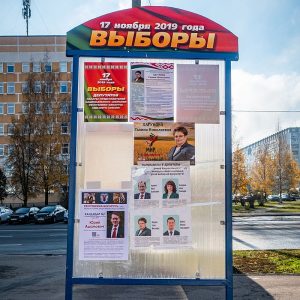
A billboard showing some of the candidates for November’s parliamentary election.
17 October 2019 – Journalist Volha Bykouskaya of the independent online newspaper Bdg.by was not allowed to attend the election commission in the Minsk district, where one of the candidates in attendance was Yury Hubarevich, chairman of the oppositional Movement for Freedom.
The commission demanded accreditation papers from her and told her to leave the room, ignoring her press card. The journalist appealed to the Central Election Commission, which responded that Belarusian journalists do not need any accreditation to attend such events.
Separately, the Belarusian Association of Journalists contacted the District Election Commission #107 for an explanation. The Commission’s representatives claimed that the journalist had been asked to show her press card, and failed to do so.
Link: https://baj.by/en/content/journalist-volha-bykouskaya-barred-meeting-election-commission-minsk
Category: Blocked Access
Source(s) of violation: Government/State Agency/Public official(s)/Political party
Freelance journalist denied accreditation for the 11th time
17 October 2019 – Hrodna journalist Viktar Parfionenka has been denied accreditation by the Belarusian Ministry of Foreign Affairs. That was his eleventh attempt to get official permission to work as a reporter for the Belarusian Radio Racyja, which is headquartered in Poland.
Since 2009, Parfionenka has been trying to obtain accreditation to be able to legally contribute to Radio Racyja. Each year he compiled a set of documents necessary for accreditation, but has so far failed become accredited.
This year he was denied again, under paragraph 15.4 of the Regulations on Accreditation of Foreign Journalists: “To refuse accreditation to journalists of a foreign media outlet for 6 months after known facts of this outlet using the services of unaccredited journalists and (or) other persons without accreditation.”
Link: https://baj.by/en/content/radio-racyja-journalist-denied-accreditation-11th-time https://vitebskspring.org/vyasna/4157-mzs-bielarusi-nie-akredytavala-viktara-parfionienku-11y-raz
Category: Blocked Access, Legal Measures
Source(s) of violation: Government/State Agency/Public official(s)/Political party
DDoS attack on Onliner.by news site
10 October 2019 – One of the most popular Belarusian websites, Onliner.by, appeared to have been the target of a significant DDoS attack. The website administrators reported difficulty loading the page and users reported having difficulty accessing the website. Suspicious activity was reported in users’ profiles.
Onliner.by, which is a news site that focuses mainly on digital technology, informed their audience about the incident and apologised for the inconvenience. An editorial letter suggested that website users improved their profiles’ security by changing their passwords and enabling two-step verification.
Link: https://tech.onliner.by/2019/10/10/ddos-4
https://baj.by/be/content/onliner-podvergaetsya-ddos-atake
Category: DDoS/Hacking/Doxing
Source(s) of violation: Unknown
YouTube blogger detained after covering opposition rally
5 October 2019 – Video blogger Siarhei Tsikhanouski, who is behind the popular YouTube channel Country for Life, was detained in central Minsk after he carried out a live broadcast of opposition politician Mikalai Statkevich’s pre-election rally.
Tsikhanouski said during the live broadcast that his car was surrounded by six traffic police cars, and that he was told that unpaid fines were registered to his car. Then the blogger was told to drive to the Leninski District Police Department. There he was informed that his car might have been stolen. After having filed a police report, he was released. He spent two hours at the police station.
UPDATE: 15 October 2019 – Tsikhanouski was fined 12.75 rubles for violating traffic rules. The blogger told Radio Liberty that he thought that it was unlikely that six traffic police cars were involved in his arrest only to give him a small fine. He said that he thought that the police wanted to confiscate the equipment, with which we were conducting the live broadcasting, or that they simply wanted to intimidate them. He said that because he let many people know that he was in the police department, people were calling him and going to the police department.
Link(s): https://belsat.eu/ru/news/avtora-kanala-strana-dlya-zhizni-zaderzhivali-shest-ekipazhej-gai/
https://www.svaboda.org/a/30201950.html
https://www.svaboda.org/a/30216368.html
Category: Arrest/Detention/Interrogation,
Source(s) of violation: Police
Blogger Andrei Pavuk subjected to attempts to frame him
4 October 2019 – Blogger Andrei Pavuk was contacted by a duty officer of the Aktsiabrski district police department, who stated that the police had received a phone call, allegedly from the blogger’s phone number. The police said that the man on the phone, who claimed to be Andrei Pavuk, said that he had “killed his wife Volha and her lover.” The male caller also provided the blogger’s home address. Pavuk’s wife, who was with him at the time of the police call, had to explain the officer that the call was a hoax. She then filed a police report, demanding that the perpetrator be found.
The attempts to frame Pavuk came as the court is considering his lawsuit against local police for compensation for non-pecuniary damages from the police for his unlawful detention and search in March 2019.
On 20 March, the Ministry of Emergency Situations received a hoax message about a mine at a local government building, allegedly sent from Pavuk’s email. The blogger was detained and searched, and his equipment was confiscated.
Link(s): https://udf.by/news/main_news/200208-ja-ubil-svoju-zhenu-i-ee-ljubovnika-neizvestnye-terrorizirujut-semju-izvestnogo-blogera.html
https://naviny.by/article/20191006/1570369644-blogeru-andreyu-pauku-pozvonili-iz-milicii-utochnit-ubival-li-svoyu
Category: Online Defamation/Discredit/Harassment/Verbal Abuse
Source(s) of violation: Unknown [/vc_column_text][/vc_column_inner][/vc_row_inner][/vc_column][/vc_row][vc_row][vc_column][vc_basic_grid post_type=”post” max_items=”4″ element_width=”6″ grid_id=”vc_gid:1574848372226-a9d8b457-3ad8-0″ taxonomies=”8996″][/vc_column][/vc_row]



 Council of Europe member states must engage fully with the platform for journalism
Council of Europe member states must engage fully with the platform for journalism



